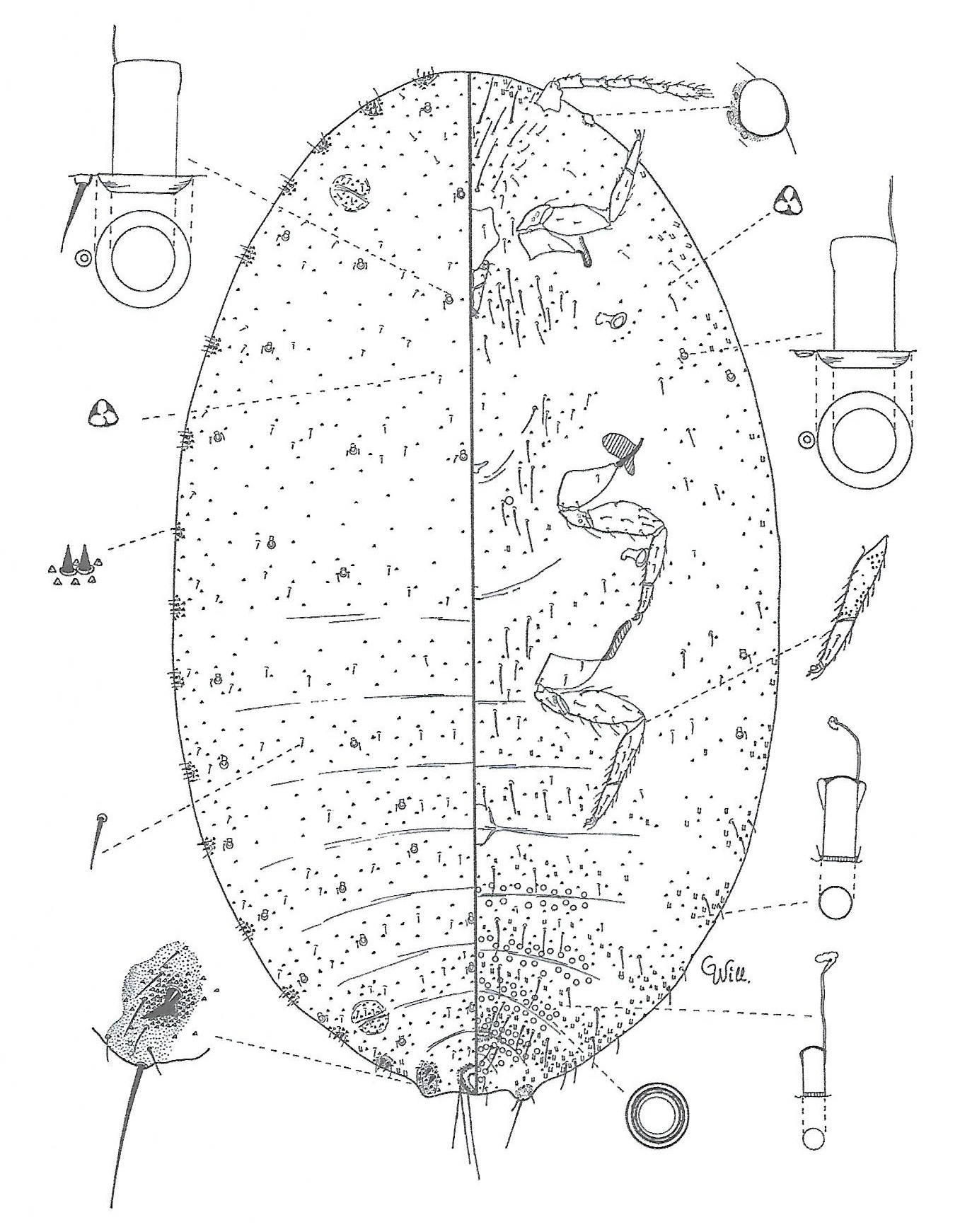Valid Names Results
Pseudococcus scatoterrae Granara de Willink, 2018 (Pseudococcidae: Pseudococcus)Nomenclatural History
- Pseudococcus near sociabilis Casco Mila 2012. nomen nudum
- Pseudococcus scatoterrae Granara de Willink 2018: 42. Type data: URUGUAY: 1995, on Cydonia oblonga, by Terra. Holotype, female, by original designation Type depository: Tucuman: Fundacion e Instituto Miguel Lillo, Universidade Nactional de Tucuman, Argentina; accepted valid name Illustr.
- Pseudococcus scatoterra Granara de Willink, 2018; Granara de Willink & González 2018: 9, 12. misspelling of species epithet
Common Names
Ecological Associates
Hosts:
Families: 2 | Genera: 4
- Rosaceae
- Cydonia oblonga | GranarGo2018
- Malus | GranarGo2018
- Malus domestica | GranarGo2018
- Pyrus communis | GranarGo2018
- Rutaceae
- Citrus limon | GranarGo2018
Geographic Distribution
Countries: 1
- Uruguay | PachecKaBa2020
Keys
- PachecKaBa2020: pp.504-505 ( Adult (F) ) [Pseudococcidae in Uruguay]
- GranarGo2018: pp.10-14 ( Adult (F) ) [Central & South American Pseudococcus]
Remarks
- Systematics: Pseudococcus scatoterrae is similar to P. solenedyos, found in Mexico on various fruit trees, because both have pores on the tibia, eyes with discoidal pores on narrow sclerotized rimsand numerous oral border ducts on the dorsum. It differs because 1) it lacks tubular ducts with an oral rims in the frontal area of the venter (present in the front of the venter and dorsum in P. solenedyos); 2) lacks ducts with an oral rim between C2 and C3 (present in P. solenedyos); 3) has four ducts with an oral border between C5 and C11 (5-15 in P. solenedyos); and 4) has ducts with oral rims between the anterior ostioles (absent in P. solenedyos). (Granara de Willink & González, 2018.)
- Structure: Translucent pores on the tibia; eyes with 3-4 discoidal pores in a narrow scleroyized ring; with 15 to 17 pairs of cerarii; Tubular ducts with dorsal, sub-lateral, lateral and oral borders medial on abdomen and cephalothorax, one behind C1, one between the ostoli, absent between C2 and C3; antennae with seven or eight segments; ventral oral border ducts, between C5 and C11; Tubular ducts with frontal collar, on prothorax, very scarce on margin of meso and metathorax; multilocular pores on the abdomen, up to segment IV. Setae cisvulvares two on each side of the body. (Granara de Willink & González, 2018.)
- Economic Importance: The damage caused by Ps. scatoterrae to fruits was mainly aesthetic, where the insects settle in the calyx and near the pedicel of the fruit, jeopardizing its commercial value due to honeydew excretions promoting the development of unsightly sooty molds (Pacheco da Silva, et al., 2020)
- General Remarks: Detailed description and illustration in Granara de Willink & González, 2018.
Illustrations
Citations
- GranarGo2018: description, diagnosis, distribution, host, illustration, key, taxonomy, 9-14, 42-43
- PachecKaBa2020: distribution, host, key, phylogeny, 505, 506, 516



